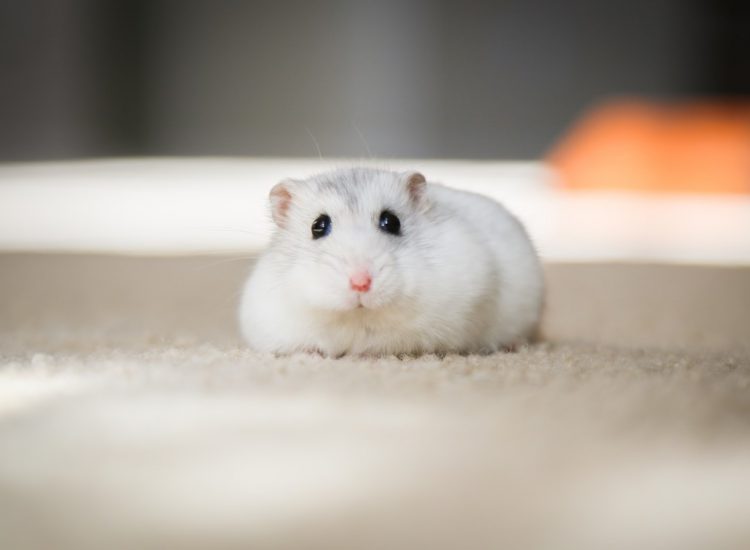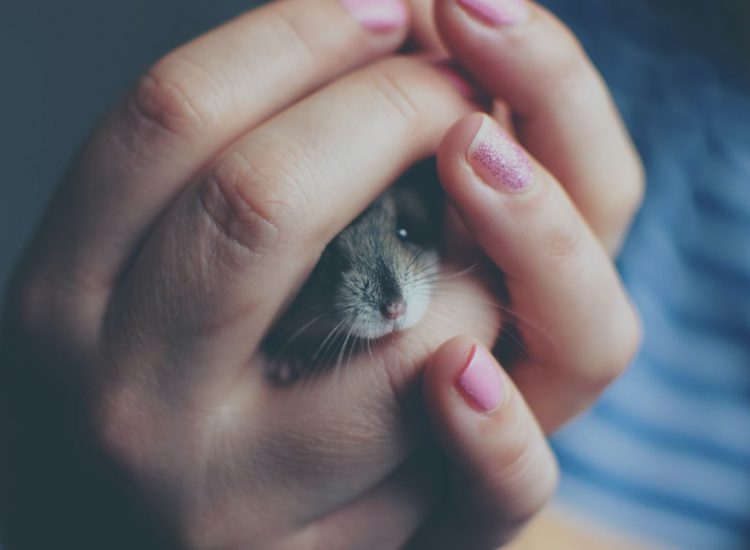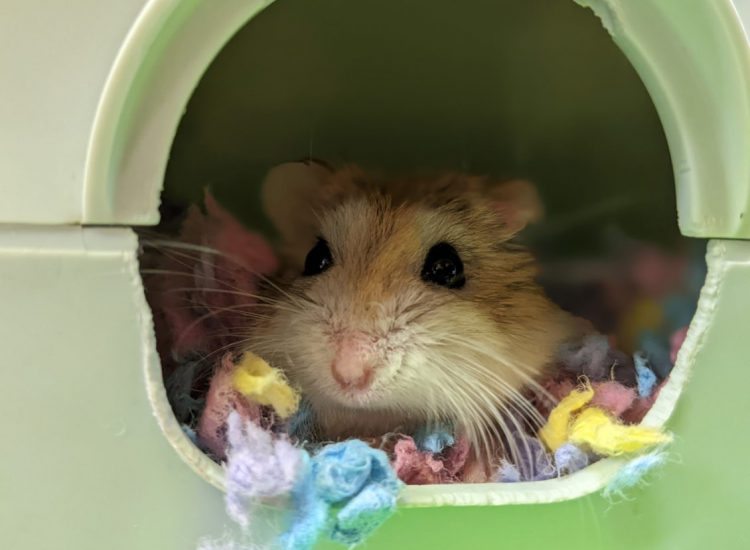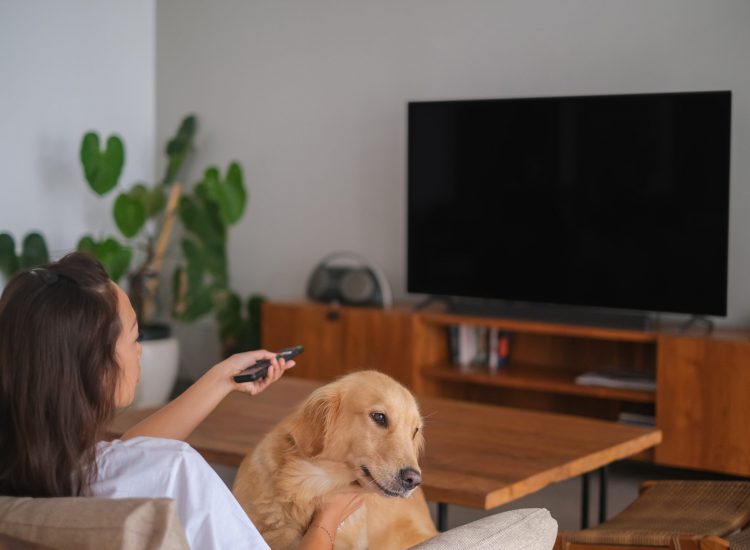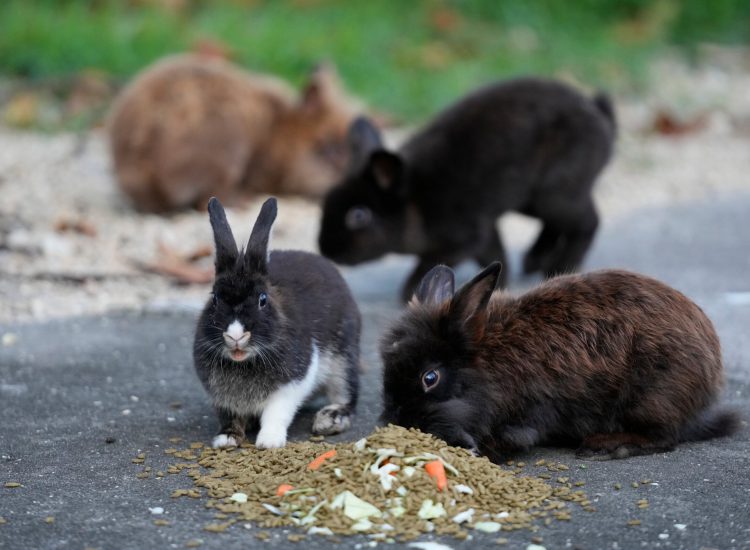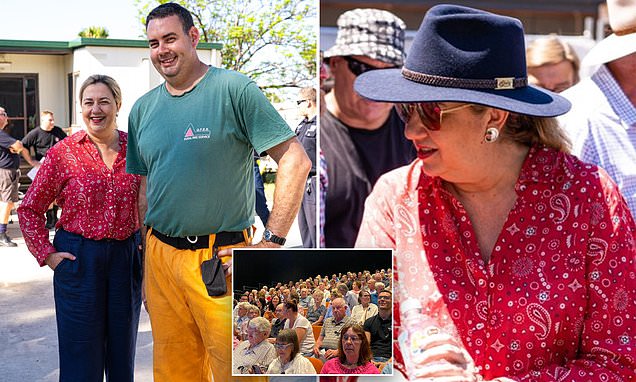Ethics assertion
In vitro and animal work have been carried out beneath applicable biosafety situations in a BSL-3 facility on the Institut für Virologie, Freie Universität Berlin, Germany. All animal experiments have been carried out in compliance with related institutional, nationwide and worldwide pointers for the care and humane use of animals and authorised by the competent state authority, Landesamt für Gesundheit und Soziales, Berlin, Germany (allow quantity 0086/20).
Cells
Vero E6 (obtained from ATCC, CRL-1586), Vero E6-TMPRSS2 (obtained from the Nationwide Institute for Organic Requirements and Management (NIBSC), 100978) and Calu-3 (obtained from ATCC, HTB-55) cells have been cultured in minimal important medium (MEM) containing 10% fetal bovine serum, 100 IU ml−1 penicillin G and 100 µg ml−1 streptomycin at 37 °C and 5% CO 2 . As well as, the cell tradition medium for Vero E6-TMPRSS2 cells contained 1,000 µg ml−1 geneticin (G418) to make sure choice for cells expressing the genes for neomycin resistance and TMPRSS2.
Viruses
The modified live-attenuated SARS-CoV-2 mutant sCPD9 and SARS-CoV-2 variants B.1 (BetaCoV/Munich/ChVir984/2020; B.1, EPI_ISL_406862), Beta (B.1.351; hCoV-19/Netherlands/NoordHolland_20159/2021) and Delta (B.1.617.2; SARS-CoV-2, Human, 2021, Germany ex India, 20A/452R (B.1.617)) have been propagated on Vero E6-TMPRSS2 cells. Omicron BA.1 (B.1.1.529.1; hCoV-19/Germany/BE-ChVir26335/2021, EPI_ISL_7019047) was propagated on CaLu-3 cells. All virus shares have been entire genome sequenced earlier than an infection experiments to verify genetic integrity within the majority of the inhabitants, particularly on the furin cleavage website. Earlier than experimental an infection, virus shares have been saved at −80 °C.
Animal husbandry
9- to 11-week-old Syrian hamsters (Mesocricetus auratus; breed RjHan:AURA) have been bought from Janvier Labs and have been housed in teams of two to three animals in individually ventilated cages. The hamsters had free entry to meals and water. They have been allowed to get used to the housing situations for 7 d earlier than vaccination. For each experiments, the cage temperatures have been maintained at a relentless vary of twenty-two to 24 °C with a relative humidity between 40 and 55%.
Vaccination and an infection experiments
For an infection experiments, Syrian hamsters have been randomly assigned to teams, with 50–60% of the animals in every group being feminine. Within the first experiment, 15 hamsters have been mock-vaccinated or vaccinated with live-attenuated sCPD9 virus, Ad2-spike or mRNA. Vaccination with sCPD9 was utilized by intranasal instillation beneath anaesthesia (1 × 105 focus-forming items (f.f.u.), 60 µl)53. Ad2-spike (5 × 108 infectious items, 200 μl) and mRNA vaccine (5 μg mRNA, 100 μl) have been utilized intramuscularly. Mock-vaccinated hamsters have been vaccinated by intranasal instillation with sterile cell tradition supernatant obtained from uninfected Vero E6-TMPRSS2 cells. At 21 d after vaccination, hamsters have been challenge-infected with SARS-CoV-2 Delta variant (1 × 105 plaque-forming items (p.f.u.), 60 µl) by intranasal instillation beneath anaesthesia. Within the second experiment, 10 hamsters have been both mock-vaccinated or vaccinated with one of many three vaccines (see above) adopted by a booster vaccination 21 d later. At 14 d after booster vaccination, the hamsters have been challenged as described above.
Transmission experiments
To find out onward transmission of problem virus in vaccinated people, we vaccinated 3 animals per group in a prime-boost routine. To this finish, hamsters acquired both 1 × 104 f.f.u. sCPD9delFCS in 60 µl MEM intranasally, 5 μg BNT162b2 mRNA in 100 μl regular saline (0.9% NaCl in sterile water) intramuscularly or 60 µl plain MEM intranasally (mock). Vaccination was boosted utilizing the identical vaccines for every respective group 21 d after preliminary vaccination.
Vaccinated hamsters have been challenge-infected with 1 × 105 p.f.u. SARS-CoV-2 variant B.1 as described above. At 24 h after an infection, contaminated vaccinated hamsters have been introduced into contact with naïve animals and co-habitated to observe transmission for six consecutive days. Each day oral swabs have been obtained from every animal to observe virus shedding and transmission.
Vaccine preparations
sCPD9 was grown on Vero E6-TMRSS2 cells and titrated on Vero E6 cells as described beforehand; ultimate titres have been adjusted to 2 × 106 f.f.u. ml−1 in MEM. Recombinant Ad2-spike was generated, produced on 293T cells and purified as beforehand described23. BNT162b2 was obtained as a industrial product (Comirnaty) and dealt with precisely as beneficial by the producer, besides that the ultimate focus of mRNA was adjusted to 50 µg ml−1 (100 µg ml−1 is the beneficial focus to be used in people) by including injection-grade saline (0.9% NaCl in sterile water) instantly earlier than use.
To extend genetic stability of the sCPD9 assemble, the furin cleavage website (FCS) of the spike protein was deleted to create sCPD9delFCS. This FCS-deleted vaccine virus was solely used for the transmission research of this paper (Prolonged Information Fig. 5). Importantly, all vaccines used on this research include the identical SARS-CoV-2 spike antigen derived from the ancestral B.1 (Wuhan) sequence.
Vaccination
sCPD9 was administered intranasally beneath common anaesthesia (0.15 mg kg−1 medetomidine, 2.0 mg kg−1 midazolam and a pair of.5 mg kg−1 butorphanol) at a dose of 1 × 105 f.f.u. per animal in a complete quantity of 60 µl MEM. For transmission experiments (Prolonged Information Fig. 5), 1 × 104 f.f.u. sCPD9delFCS was utilized in the identical manner. Ad2-spike was injected intramuscularly at 5 × 108 infectious items in 200 µl injection buffer (3 mM KCl, 1 mM MgCl 2 , 10% glycerol in PBS). BNT162b2 was injected intramuscularly at a dose of 5 µg mRNA per animal in 100 µl physiological saline (0.9% NaCl in sterile water).
Nasal washes
Nasal washes have been obtained from every hamster on this research. To this finish, the cranium of every animal was break up barely paramedian, such that the nasal septum remained intact on one aspect of the nostril. Subsequently, a 200 µl pipette tip was fastidiously slid beneath the nasal septum and 150 µl wash fluid (PBS with 30 µg ml−1 ofloxacin and 10 µg ml−1 voriconazole) was utilized. The wash was collected via the nostril and the washing process was repeated twice; roughly 100 µl of pattern was recovered after the third wash.
Nasal washes obtained from the prime-only vaccination trial have been subjected to enzyme-linked immunosorbent assay (ELISA) evaluation of SARS-CoV-2 spike-specific IgA antibodies. Nasal washes obtained from the prime-boost vaccination trial have been used for microneutralization assay to evaluate their capability to neutralize the SARS-CoV-2 ancestral variant B1.
Plaque assay
For quantification of replication-competent virus, 50 mg of lung tissue have been used. Serial 10-fold dilutions have been ready after homogenizing the organ samples in a bead mill (Analytic Jena). The dilutions have been plated on Vero E6 cells grown in 24-well plates and incubated for two.5 h at 37 °C. Subsequently, cells have been overlaid with MEM containing 1.5% carboxymethylcellulose sodium (Sigma Aldrich) and stuck with 4% formaldehyde answer 72 h after an infection. To depend the plaque-forming items, plates have been stained with 0.75% methylene blue.
Histopathology, immunohistochemistry and in situ hybridization
Lungs have been processed as beforehand described53. After cautious elimination of the left lung lobe, tissue was mounted in PBS-buffered 4% formaldehyde answer (pH 7.0) for 48 h. For conchae preparation, elements of the left cranium half have been mounted accordingly. Afterwards, lungs or conchae have been gently faraway from the nasal cavity and embedded in paraffin, minimize at 2 µm thickness and stained with hematoxylin and eosin (H&E). In situ hybridization on lungs was carried out as beforehand described54 utilizing the ViewRNA ISH Tissue Assay equipment (Invitrogen by Thermo Fisher) in keeping with the producer’s directions, with minor changes. For SARS-CoV-2 RNA localization, probes detecting N gene sequences (NCBI database NC_045512.2, nucleotides 28,274–29,533, assay ID: VPNKRHM) have been used. Sequence-specific binding was managed through the use of a probe for detection of pneumolysin. Immunohistochemistry on conchae was carried out as described earlier55 (particulars in Supplementary Strategies).
Blinded microscopic evaluation was carried out by a board-certified veterinary pathologist (J.B.).
SARS-specific Ig measurement by ELISA from serum and nasal washes
An in-house ELISA was carried out to analyze SARS-specific IgG ranges in serum and SARS-specific IgA ranges in nasal washes after vaccination (particulars in Supplementary Strategies).
Neutralization assays from nasal washes
To evaluate the capability of nasal washes obtained from the prime-boost vaccination trial to neutralize genuine SARS-CoV-2 (B.1), nasal washes have been diluted 1:1 in 2× MEM containing 50 µg ml−1 enrofloxacin and 10 µg ml−1 voriconazole. Subsequent serial dilutions have been carried out in MEM containing 25 mg ml−1 enrofloxacin, 5 µg ml−1 voriconazole and 1% FBS. SARS-CoV-2 (50 p.f.u.) have been added to the nasal wash dilutions and dilutions from 1:2 to 1:256 have been plated on near-confluent Vero E6 cells seeded in 96-well cell tradition plates. At 3 d after inoculation, cells have been mounted and stained with methylene blue. To establish virus-neutralizing dilutions, the integrity of the cell monolayer was assessed by comparability with management wells that contained both no nasal wash or no virus. The final dilution with no proof of virus-induced cytopathic impact was thought of the neutralizing titre for the respective pattern.
Serum neutralization assay
Serum samples have been examined for his or her potential to neutralize totally different SARS-CoV-2 variants. Day 0 samples of the prime-boost trial couldn’t be examined for neutralizing antibodies towards B.1.351 (Beta) because of lack of fabric. Sera have been inactivated at 56 °C for 30 min. Twofold serial dilutions (1:8 to 1:1,024) have been plated on 96-well plates and 200 p.f.u. SARS-CoV-2 have been pipetted into every properly. After an incubation time of 1 h at 37 °C, the dilutions have been transferred to 96-well plates containing sub-confluent Vero E6 cells and incubated for 72 h at 37 °C (B.1, Beta, Delta) or for 96 h at 37 °C (Omicron). The plates have been mounted with 4% formaldehyde answer and stained with 0.75% methylene blue. Wells that confirmed no cytopathic impact have been thought of neutralized.
IFN-γ ELISpot evaluation
Hamster IFN-γ ELISpot evaluation was carried out as described previously56. In short, the hamster IFN-γ ELISpotBASIC equipment (MABTECH) was used to detect IFN-γ secretion by 5 × 105 remoted splenocytes, every in co-culture with totally different stimuli. Medium-treated splenocytes served as unfavorable management and recombinant ovalbumin (10 mg ml−1) was used as unfavorable protein management stimulus. Common stimulation of T cells was achieved utilizing 5 μg ml−1 concanavalin A (ConA, Sigma Aldrich). Recombinant SARS-CoV-2 (2019-nCoV) spike protein (S1 + S2 ECD, His tag; 10 mg ml−1; Sino Organic Europe) or 10 mg ml−1 recombinant SARS-CoV-2 (2019-nCoV) nucleocapsid protein (N) (Sino Organic Europe) have been used to re-stimulate SARS-CoV-2-specific T cells. Spots have been counted utilizing an Eli.Scan ELISpot scanner (AE.L.VIS) and the evaluation software program ELI.Analyse v5.0 (AE.L.VIS).
RNA extraction and qPCR
To quantify genomic copies in oropharyngeal swabs and 25 mg homogenized lung tissue, RNA was extracted utilizing innuPREP Virus DNA/RNA equipment (Analytic Jena) in keeping with the producer’s directions. qPCR was carried out utilizing the NEB Luna Common Probe One-Step RT–qPCR equipment (New England Biolabs) with biking situations of 10 min at 55 °C for reverse transcription, 3 min at 94 °C for activation of the enzyme, and 40 cycles of 15 s at 94 °C and 30 s at 58 °C on a qTower G3 cycler (Analytic Jena) in sealed qPCR 96-well plates. Primers and probes have been used as beforehand reported57. Oligonucleotides (Sequence (5’-3’)): E_Sarbeco_F: ACAGGTACGTTAATAGTTAATAGCGT;
E_Sarbeco_R: ATATTGCAGCAGTACGCACACA;
E_Sarbeco_P1: FAM-ACACTAGCCATCCTTACTGCGCTTCG-BBQ.
Mesocricetus auratus genome annotation
For quantification of gene expression, we used the MesAur 2.0 genome meeting and annotation out there through the NCBI genome database (https://www.ncbi.nlm.nih.gov/genome/11998?genome_assembly_id=1585474). The GFF file was transformed to GTF utilizing gffread 0.12.758. The place no overlaps have been produced, 3’-UTRs within the annotation have been prolonged by 1,000 bp as described previously59. Additional sprucing steps for the GTF file are described on the GitHub web page accompanying this paper (https://github.com/Berlin-Hamster-Single-Cell-Consortium/Stay-attenuated-vaccine-strategy-confers-superior-mucosal-and-systemic-immunity-to-SARS-CoV-2). The ultimate gtf file used for the evaluation is on the market via GEO (https://www.ncbi.nlm.nih.gov/geo/question/acc.cgi?acc=GSE200596).
Bulk RNA extraction
To carry out RNA bulk sequencing, RNA was remoted from lung tissue utilizing Trizol reagent in keeping with the producer’s directions (Ambion, Life Applied sciences). Briefly, 1 ml Trizol was added to the homogenized organ pattern and vortexed completely. After an incubation time of 20 min, 200 µl of chloroform have been added. The samples have been vortexed once more and incubated for 10 min at room temperature. Subsequently, tubes have been centrifuged at 12,000 × g for 15 min at 4 °C and 500 µl of the aqueous part have been transferred into a brand new tube containing 10 µg GlycoBlue. Isopropanol (500 µl) was added, adopted by vortexing, incubating and centrifuging the samples as described above. Thereafter, isopropanol was eliminated and 1 ml of ethanol (75%) was utilized. The tubes have been inverted shortly and centrifuged at 8,000 × g for 10 min. After releasing the pellet from ethanol, RNA was resuspended in 30 µl of RNase-free water and saved at −80 °C.
Cell isolation from blood and lungs
White blood cells have been remoted from EDTA-blood as beforehand described; steps included purple blood cell lysis and cell filtration earlier than counting. Lung cells (caudal lobe) have been remoted as beforehand described26,60; steps included enzymatic digestion, mechanical dissociation and filtration earlier than counting in trypan blue. Buffers contained 2 µg ml−1 actinomycin D to stop de novo transcription through the procedures.
Cell isolation from nasal cavities
To acquire single-cell suspensions from the nasal mucosa of SARS-CoV-2-challenged hamsters, the cranium of every animal was break up barely paramedian in order that the nasal septum remained intact on the left aspect of the nostril. The proper aspect of the nostril was fastidiously faraway from the skull and saved in ice-cold 1× PBS with 1% BSA and a pair of µg ml−1 actinomycin D till additional use. Nostril elements have been transferred into 5 ml Corning Dispase answer supplemented with 750 U ml−1 Collagenase CLS II and 1 mg ml−1 DNase, and incubated at 37 °C for 15 min. For preparation of cells from the nasal mucosa, the conchae have been fastidiously faraway from the nasal cavity and re-incubated in digestion medium for 20 min at 37 °C. Conchae tissue was dissociated by pipetting and urgent via a 70 µm filter with a plunger. Ice-cold PBS with 1% BSA and a pair of µg ml−1 actinomycin D was added to cease the enzymatic digestion. The cell suspension was centrifuged at 400 × g at 4 °C for 15 min and the supernatant discarded. The pelleted nasal cells have been resuspended in 5 ml purple blood cell lysis buffer and incubated at room temperature for two min. Lysis response was stopped with 1× PBS with 0.04% BSA and cells centrifuged at 400 × g at 4 °C for 10 min. Pelleted cells have been resuspended in 1× PBS with 0.04% BSA and 40 µm-filtered. Stay cells have been counted in trypan blue and viability charges decided utilizing a counting chamber. Cell focus for scRNA-seq was adjusted by dilution.
Single-cell RNA sequencing
Remoted cells from blood, lungs and nasal cavities of Syrian hamsters have been subjected to scRNA-seq utilizing the ten× Genomics Chromium Single Cell 3’ Gene Expression system with characteristic barcoding know-how for cell multiplexing (particulars in Supplementary Strategies).
Evaluation of single-cell RNA sequencing knowledge
Sequencing reads have been initially processed utilizing bcl2fastq 2.20.0 and the multi command of the Cell Ranger 6.0.2 software program. For the cellplex demultiplexing, the project thresholds have been partially adjusted (for particulars, see the GitHub web page at https://github.com/Berlin-Hamster-Single-Cell-Consortium/Stay-attenuated-vaccine-strategy-confers-superior-mucosal-and-systemic-immunity-to-SARS-CoV-2). Additional processing was completed in R 4.0.4 Seurat R 4.0.6 package61, in addition to R packages ggplot2 3.3.5, dplyr 1.0.7, DESeq2 1.30.1, lme4 1.1–27.1 and dependencies, and in Python 3.9.13 in addition to Python packages scanpy 1.9.1, scvelo 0.2.4 and dependencies. Within the subsequent step, cells have been filtered by a unfastened high quality threshold (minimal of 250 detected genes per cell) and clustered. Cell varieties have been then annotated per cluster and filtered utilizing cell type-specific thresholds (cells under the median or within the lowest quartile inside a cell sort have been eliminated). The remaining cells have been processed utilizing the SCT/combine workflow62 and cell varieties once more annotated on the ensuing Seurat object. All code for downstream evaluation is on the market on GitHub at https://github.com/Berlin-Hamster-Single-Cell-Consortium/Stay-attenuated-vaccine-strategy-confers-superior-mucosal-and-systemic-immunity-to-SARS-CoV-2.
Statistics and reproducibility
Particulars on statistical evaluation of sequencing knowledge together with pre-processing steps are described within the particular person Strategies part. Analyses of virological, histopathological, ELISA, cell frequencies and cell quantity statistics have been carried out with GraphPad Prism 9. Statistical particulars are offered in respective determine legends. No statistical technique was used to predetermine pattern measurement. Information distribution was assumed to be regular however this was not formally examined. No knowledge have been excluded from the analyses. All experiments involving reside animals have been randomized, different experiments weren’t randomized. The investigators have been blinded to allocation of hamsters throughout animal experiments and first consequence evaluation (medical growth, virus titrations, qPCR, ELISpot, serology and histopathology). Investigators weren’t blinded to allocation in different experiments and analyses.
Reporting abstract
Additional info on analysis design is on the market within the Nature Portfolio Reporting Abstract linked to this text.
